Later life
The remainder of Hare's life was mainly spent on documenting the history, rights, and privileges of the university and town of Cambridge. In a list of recusants in London, drawn up in October 1578, his name occurs, and it is stated that he used to hear mass at the house of Lord Paulet. Hare was residing in Norton Folgate at some period between 1581 and 1594. In 1600 he was in some trouble, presumed to be on account of his religion; On 23 January 1601 the Cambridge senate passed a grace that a letter should be written in the name of the university to Sir Robert Cecil, so that Hare might not be hindered in his good works related to the highways. [1]
Hare's brother Michael died on 11 April 1611, and, though he had been twice married, left no issue. Hare therefore inherited an estate at Bruisyard in Suffolk, but survived only till 2 November in that year.
He was buried in Old St Paul's Cathedral in London, but the grave and monument were destroyed in the Great Fire of London in 1666. His name appears on a modern monument in the crypt, listing important graves lost in the fire.
The estates passed to his uncle John, father of Hugh Hare, 1st Baron Coleraine. [1]
Legacy
In 1568 Hare gave to Caius College, Cambridge, a work written on parchment, mainly on Winchester Cathedral, but referring also to the origin of the University of Cambridge. The library of Caius College contained two volumes of his collections; he presented also to the university library two curious ancient manuscripts. To the library of St Paul's Cathedral he presented a manuscript that had belonged to Syon Abbey. [1]
To the library of Trinity Hall, Cambridge, Hare gave books including Thomas de Elmham's History of St. Augustine's, Canterbury; also giving money to a fund for repairing highways around Cambridge. In 1594 he gave to the university a book relating to its privileges, written by Thomas Marhaunt, B.D., early in the fifteenth century. It is thought he was also a benefactor to Great St. Mary's Church, Cambridge, since his arms were over its south door. [1]

The Aberdeen Bestiary is a 12th-century English illuminated manuscript bestiary that was first listed in 1542 in the inventory of the Old Royal Library at the Palace of Westminster. Due to similarities, it is often considered to be the "sister" manuscript of the Ashmole Bestiary. The connection between the ancient Greek didactic text Physiologus and similar bestiary manuscripts is also often noted. Information about the manuscript's origins and patrons are circumstantial, although the manuscript most likely originated from the 13th century and was owned by a wealthy ecclesiastical patron from north or south England. Currently, the Aberdeen Bestiary resides in the Aberdeen University Library in Scotland.

Matthew Paris, also known as Matthew of Paris, sometimes confused with the nonexistent Matthew of Westminster, was an English Benedictine monk, chronicler, artist in illuminated manuscripts, and cartographer who was based at St Albans Abbey in Hertfordshire. He authored a number of historical works, many of which he scribed and illuminated himself, typically in drawings partly coloured with watercolour washes, sometimes called "tinted drawings". Some were written in Latin, others in Anglo-Norman or French verse.
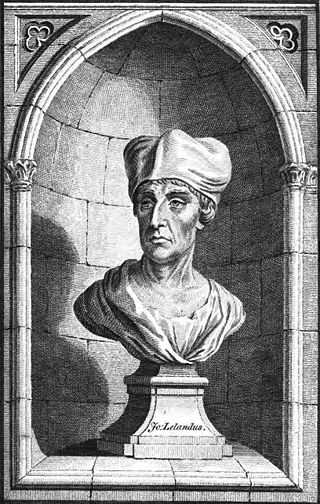
John Leland or Leyland was an English poet and antiquary.
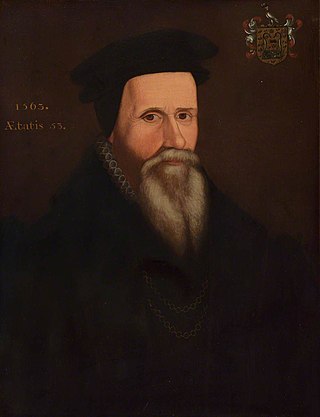
John Caius, also known as Johannes Caius and Ioannes Caius, was an English physician, and second founder of Gonville and Caius College, Cambridge.
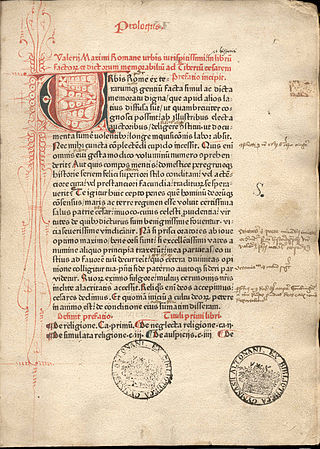
Valerius Maximus was a 1st-century Latin writer and author of a collection of historical anecdotes: Factorum et dictorum memorabilium libri IX. He worked during the reign of Tiberius.
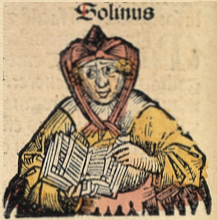
Gaius Julius Solinus was a Latin grammarian, geographer, and compiler who probably flourished in the early 3rd century AD. Historical scholar Theodor Mommsen dates him to the middle of the 3rd century.
Sir Frederic Madden KH was an English palaeographer.
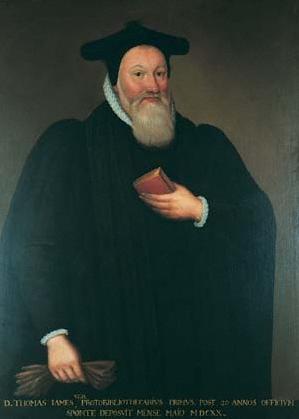
Thomas James was an English librarian and Anglican clergyman, the first librarian of the Bodleian Library, Oxford.
The 1711 Sales Auction Catalogue of the Library of Sir Thomas Browne highlights the erudition of the physician, philosopher and encyclopedist, Sir Thomas Browne (1605-1682). It also illustrates the proliferation, distribution and availability of books printed throughout 17th century Europe which were purchased by the intelligentsia, aristocracy, priestly, physician or educated merchant-class.
A bumbulum, or bombulum, was a musical instrument described in an apocryphal letter of St. Jerome to Caius Posthumus Dardanus, and illustrated in a series of illuminated manuscripts of the 10th to the 11th century, together with other instruments described in the same letter. These are the Psalter of Emmeran, 10th century, described by Martin Gerbert, who gives a few illustrations from it; the Cotton manuscript of Tiberius C. VI in the British Museum, 11th century; the famous Boulogne Psalter, A.D. 1000; and the Psalter of Angers, 9th century.

Thomas Muffet was an English naturalist and physician. He is best known his study of insects and arthropods in regard to medicine, his support of the Paracelsian system of medicine, and his emphasis on the importance of experience over reputation in the field of medicine. He was an Anti-papist due to his Puritan beliefs.
Johannes de Garlandia or John of Garland was a medieval grammarian and university teacher. His dates of birth and death are unknown, but he probably lived from about 1190 to about 1270.
Gilbert Universalis or Gilbertus Universalis was a medieval Bishop of London.

Theatrum Chemicum is a compendium of early alchemical writings published in six volumes over the course of six decades. The first three volumes were published in 1602, while the final sixth volume was published in its entirety in 1661. Theatrum Chemicum remains the most comprehensive collective work on the subject of alchemy ever published in the Western world.
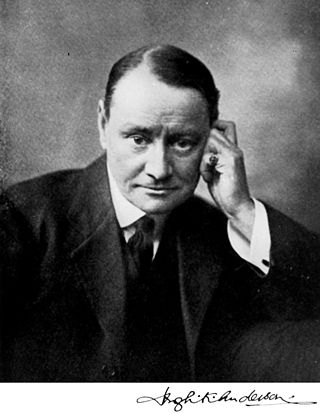
Sir Hugh Kerr Anderson was a British physiologist, and educator. He was the son of James Anderson (1811–1897) and Eliza Murray, died 1890 aged 60.
John Wessington was an English Benedictine who became prior of Durham Abbey.
Michael Lapidge, FBA is a scholar in the field of Medieval Latin literature, particularly that composed in Anglo-Saxon England during the period 600–1100 AD; he is an emeritus Fellow of Clare College, Cambridge, a Fellow of the British Academy, and winner of the 2009 Sir Israel Gollancz Prize.
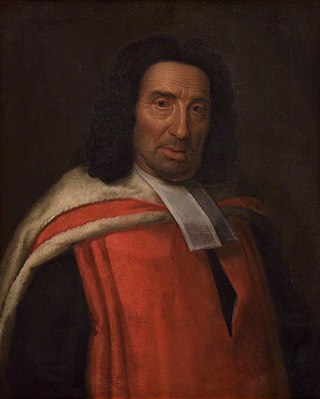
Sir John Ellys or Ellis (1634?–1716) was an English academic, Master of Gonville and Caius College, Cambridge from 1703.
The Record Commissions were a series of six Royal Commissions of Great Britain and the United Kingdom which sat between 1800 and 1837 to inquire into the custody and public accessibility of the state archives. The Commissioners' work paved the way for the establishment of the Public Record Office in 1838. The Commissioners were also responsible for publishing various historical records, including the Statutes of the Realm to 1714 and the Acts of Parliament of Scotland to 1707, as well as a number of important medieval records.
Richard of Wendover was an English cleric and physician.
![]() This article incorporates text from a publication now in the public domain : Stephen, Leslie; Lee, Sidney, eds. (1890). "Hare, Robert". Dictionary of National Biography . Vol. 24. London: Smith, Elder & Co.
This article incorporates text from a publication now in the public domain : Stephen, Leslie; Lee, Sidney, eds. (1890). "Hare, Robert". Dictionary of National Biography . Vol. 24. London: Smith, Elder & Co.









